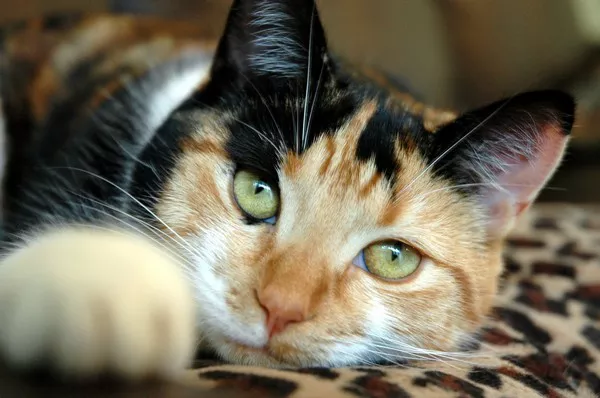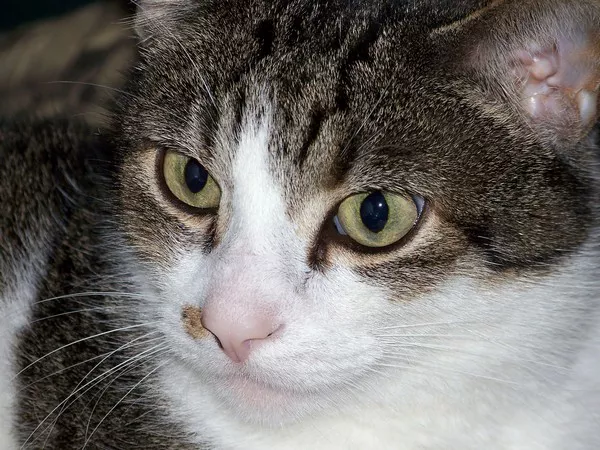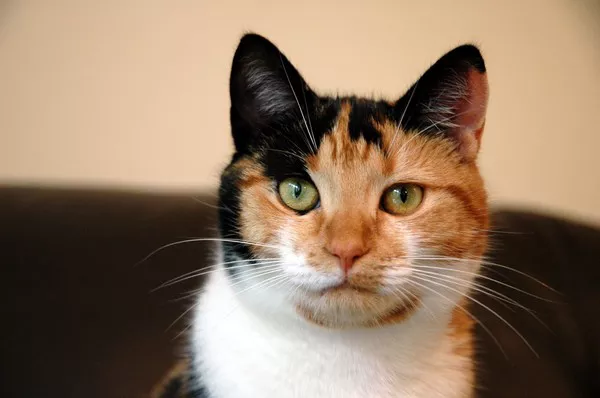Cats, with their charming personalities and expressive eyes, often use begging as a tactic to secure extra treats or meals. While it can be challenging to resist those pleading eyes, managing your cat‘s diet is crucial for maintaining optimal health and preventing obesity-related issues. In this comprehensive guide, we explore strategies on how to feed your cat to discourage begging behaviors and promote healthy weight loss, ensuring your feline friend thrives both physically and mentally.
Understanding the Factors Contributing to Begging and Weight Gain
Before diving into feeding strategies, it’s essential to comprehend the factors that contribute to begging behaviors and weight gain in cats. Several common elements may influence your cat’s tendency to beg and struggle with maintaining a healthy weight:
Overfeeding and Free-Feeding: Providing an excess of treats, multiple meals, or leaving food out all day for your cat to graze on can lead to overeating and weight gain.
High-Calorie Treats: Offering calorie-dense treats can contribute significantly to your cat’s daily caloric intake, leading to weight-related issues.
Lack of Physical Activity: Insufficient physical activity is a key factor in weight gain. Indoor cats, especially, may not engage in enough exercise to burn calories effectively.
Boredom and Anxiety: Cats may resort to begging as a response to boredom or anxiety. Offering treats or additional meals may become a coping mechanism for these emotions.
Health Issues: Underlying health problems, such as thyroid issues or diabetes, can contribute to weight gain. Consulting with a veterinarian is essential to rule out any medical conditions.
Now, let’s explore effective strategies to address these factors and create a feeding plan that discourages begging and promotes healthy weight loss.
Establish a Regular Feeding Schedule
Creating a consistent feeding schedule helps regulate your cat’s daily caloric intake and reduces the temptation to beg for extra meals. Divide your cat’s daily food portion into multiple meals, ideally two to three times a day, depending on its age and health status. This structured approach prevents overeating and provides a routine that cats appreciate for its predictability.
Tips for Establishing a Feeding Schedule:
Stick to Set Meal Times: Feed your cat at the same times each day to establish a routine. Consistency helps your cat anticipate mealtime and reduces the urge to beg for food.
Avoid Free-Feeding: Refrain from leaving food out all day for your cat to graze on. This practice can lead to overeating and weight gain. Pick up any uneaten food after a designated feeding period.
Monitor Portion Sizes: Consult with your veterinarian to determine the appropriate portion size for your cat’s age, weight, and activity level. Use measuring cups to ensure accurate portions.
Choose Nutritionally Balanced Cat Food
Selecting high-quality, nutritionally balanced cat food is fundamental to meeting your cat’s dietary needs without unnecessary additives or excessive calories. Consult with your veterinarian to determine the best type of cat food based on factors such as age, health status, and weight management goals.
Considerations for Choosing Cat Food:
Look for “Complete and Balanced” Labels: Choose cat food labeled as “complete and balanced” to ensure it meets the nutritional requirements established by recognized authorities.
Consult with Your Veterinarian: Discuss your cat’s specific nutritional needs with your veterinarian. They can recommend a diet that aligns with your cat’s age, health conditions, and weight management goals.
Avoid Excessive Treats: While treats can be a part of your cat’s diet, avoid excessive use, as they can contribute to weight gain. Opt for low-calorie treats or use a portion of your cat’s regular food as a treat.
Consider Prescription Diets: In cases of obesity or specific health conditions, your veterinarian may recommend prescription diets designed to support weight loss and address medical issues.
Incorporate Interactive Feeding Methods
Encouraging mental and physical activity during mealtime can distract your cat from begging behaviors and contribute to weight loss. Interactive feeding methods engage your cat’s natural instincts and provide mental stimulation, making meals more enjoyable.
Interactive Feeding Techniques Include:
Food Puzzle Toys: Invest in food puzzle toys that dispense kibble when manipulated. This not only slows down eating but also stimulates your cat’s problem-solving skills.
Scatter Feeding: Scatter your cat’s dry food around the house or use puzzle feeders to encourage physical activity while eating. This mimics natural hunting and foraging behaviors.
Rotate Feeding Locations: Change the location of your cat’s food bowls regularly to introduce variety. This adds an element of excitement to mealtime and prevents boredom-related begging.
Hide-and-Seek Treats: Hide small portions of your cat’s food in different locations for it to discover. This engages your cat’s sense of smell and encourages exploration.
Monitor and Control Treat Intake
While treats can be a valuable tool for positive reinforcement and bonding, it’s crucial to monitor and control their intake to prevent excessive calorie consumption. Choose treats wisely, opting for those with lower calorie content or consider using a portion of your cat’s regular food as a treat.
Guidelines for Treating Your Cat:
Limit Treat Quantities: Be mindful of the quantity of treats given, and avoid making treats a significant portion of your cat’s daily caloric intake.
Choose Low-Calorie Treats: Look for treats specifically formulated to be low in calories. Alternatively, offer small portions of your cat’s regular food as a treat.
Use Treats for Training: If you use treats for training purposes, break them into smaller pieces. This allows you to provide rewards without overindulging your cat.
Consult with Your Veterinarian: Discuss treat options with your veterinarian, especially if your cat is on a weight loss plan or has specific dietary restrictions.
Promote Regular Exercise
Physical activity is a crucial component of weight management for cats. Implementing play sessions and providing opportunities for exercise can help burn calories and reduce the likelihood of weight gain.
Tips for Promoting Cat Exercise:
Interactive Toys: Use interactive toys, such as feather wands or laser pointers, to engage your cat in play. These toys stimulate hunting instincts and encourage physical activity.
Cat Furniture and Climbing Structures: Provide cat furniture, scratching posts, and climbing structures to create an environment that promotes climbing and jumping. This enhances muscle tone and supports weight loss.
Regular Play Sessions: Schedule regular play sessions with your cat, incorporating activities that involve chasing, pouncing, and interactive play. Aim for at least 15–20 minutes of playtime per session.
Outdoor Enclosures or Leash Walking: If safe and appropriate for your cat, consider outdoor enclosures or leash walking. These activities allow for additional exercise and exposure to different environments.
Regular Veterinary Check-ups and Weight Monitoring
Consistent veterinary check-ups are essential for monitoring your cat’s overall health and addressing any concerns related to weight management. Regular check-ups allow for adjustments to the feeding plan based on your cat’s individual needs and any changes in health status.
Importance of Veterinary Check-ups:
Nutritional Assessment: During veterinary visits, discuss your cat’s diet and nutritional needs. A nutritional assessment can help determine if adjustments are needed based on your cat’s age, health status, and lifestyle.
Weight Monitoring: Regularly monitor your cat’s weight, and consult with your veterinarian if you observe any significant changes. Sudden weight loss or gain can be indicative of underlying health issues.
Dental Health: Dental problems can impact a cat’s ability to eat comfortably. Regular veterinary check-ups include dental examinations to ensure your cat’s oral health is maintained.
Tailored Weight Management Plans: Veterinarians can provide personalized weight management plans based on your cat’s specific needs. This may include adjustments to portion sizes, feeding frequency, or the introduction of specialized diets.
Conclusion
Feeding your cat to curb begging and promote healthy weight loss requires a multifaceted approach that addresses various factors influencing your cat’s behavior and well-being. By establishing a consistent feeding schedule, choosing nutritionally balanced cat food, incorporating interactive feeding methods, monitoring treat intake, promoting regular exercise, and prioritizing veterinary check-ups, you can create a comprehensive plan for your cat’s health. Remember that each cat is unique, and consulting with your veterinarian ensures that the feeding plan aligns with your cat’s individual requirements. With a thoughtful and tailored approach, you can foster a healthy and happy life for your feline companion.





















